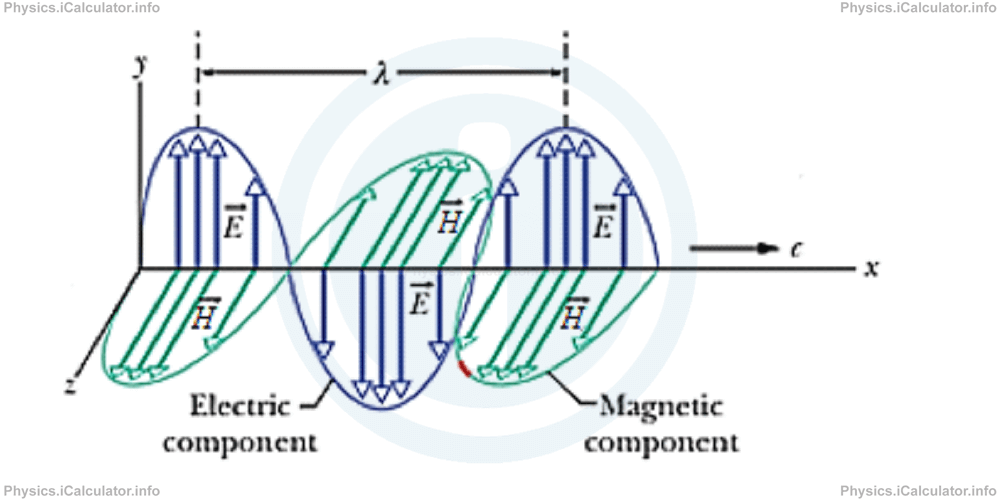Menu
Physics Lesson 12.1.3 - Why is Light an Electromagnetic Wave? What does EM Wave Really Mean?
Please provide a rating, it takes seconds and helps us to keep this resource free for all to use
Welcome to our Physics lesson on Why is Light an Electromagnetic Wave? What does EM Wave Really Mean?, this is the third lesson of our suite of physics lessons covering the topic of Features of Light, you can find links to the other lessons within this tutorial and access additional physics learning resources below this lesson.
Why is Light an Electromagnetic Wave? What does EM Wave Really Mean?
Light, as a kind of EM wave carries energy, not matter. As such, it is produced by a source which when it is very hot becomes incandescent (emits light). Light is part of EM spectrum, i.e. unlike mechanical waves, it possesses both an electric and magnetic component (E and H) which are perpendicular to each other. These components are represented by the respective fields (electric and magnetic field). Thus, all EM waves contain two sinusoidal equations: one for each field. They are:
for electric field and
for magnetic field.
The electric field component is much greater than the magnetic one. The ratio between them gives the speed of light c.
The value 3 × 108 m/s for the speed of light in vacuum is a rounded value. Accurate measurements give the value c = 299 792 458 m/s.
The figure below shows the two components of EM wave where the magnetic component is much greater than it really is for demonstration purpose.

This is the reason why light is an EM wave, i.e. because it is a combination of an electric and magnetic sinusoidal component.
You have reached the end of Physics lesson 12.1.3 Why is Light an Electromagnetic Wave? What does EM Wave Really Mean?. There are 6 lessons in this physics tutorial covering Features of Light, you can access all the lessons from this tutorial below.
More Features of Light Lessons and Learning Resources
Whats next?
Enjoy the "Why is Light an Electromagnetic Wave? What does EM Wave Really Mean?" physics lesson? People who liked the "Features of Light lesson found the following resources useful:
- Em Wave Feedback. Helps other - Leave a rating for this em wave (see below)
- Optics Physics tutorial: Features of Light. Read the Features of Light physics tutorial and build your physics knowledge of Optics
- Optics Revision Notes: Features of Light. Print the notes so you can revise the key points covered in the physics tutorial for Features of Light
- Optics Practice Questions: Features of Light. Test and improve your knowledge of Features of Light with example questins and answers
- Check your calculations for Optics questions with our excellent Optics calculators which contain full equations and calculations clearly displayed line by line. See the Optics Calculators by iCalculator™ below.
- Continuing learning optics - read our next physics tutorial: Reflection of Light
Help others Learning Physics just like you
Please provide a rating, it takes seconds and helps us to keep this resource free for all to use
We hope you found this Physics lesson "Features of Light" useful. If you did it would be great if you could spare the time to rate this physics lesson (simply click on the number of stars that match your assessment of this physics learning aide) and/or share on social media, this helps us identify popular tutorials and calculators and expand our free learning resources to support our users around the world have free access to expand their knowledge of physics and other disciplines.